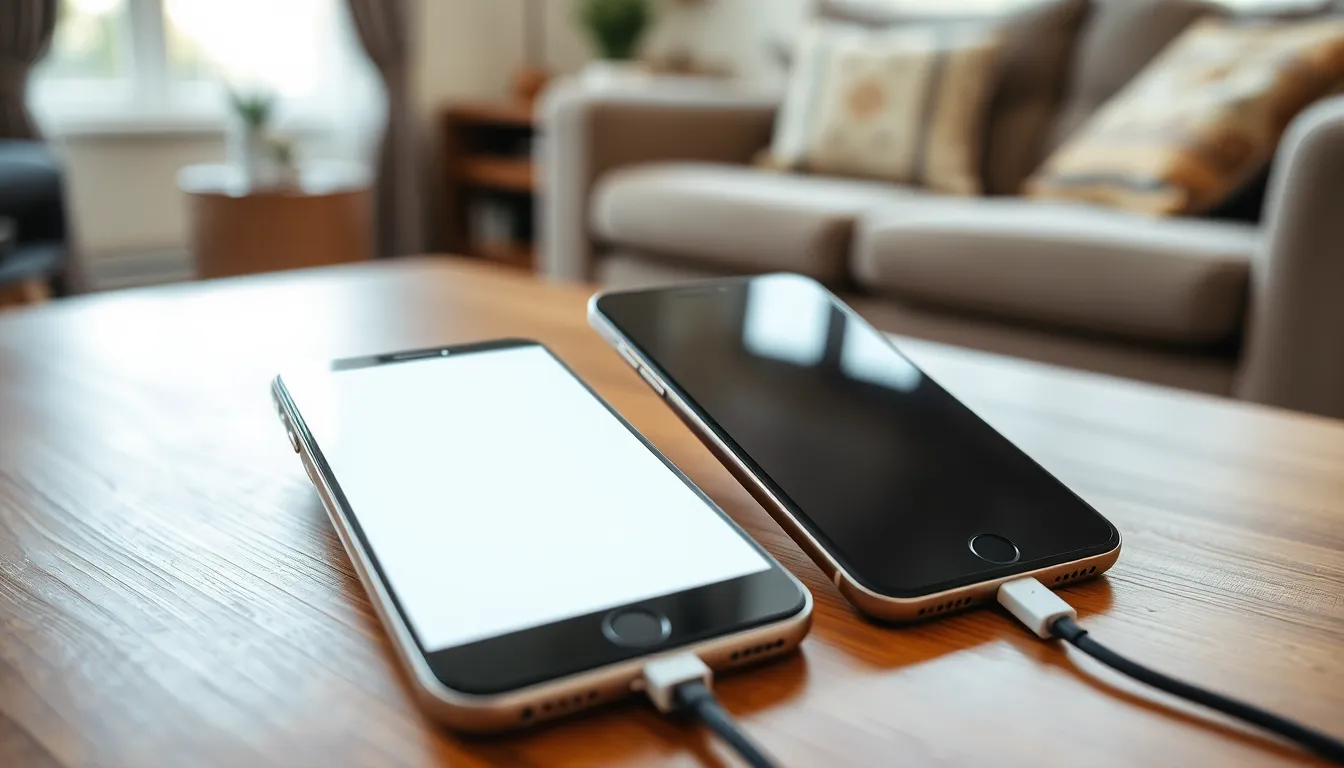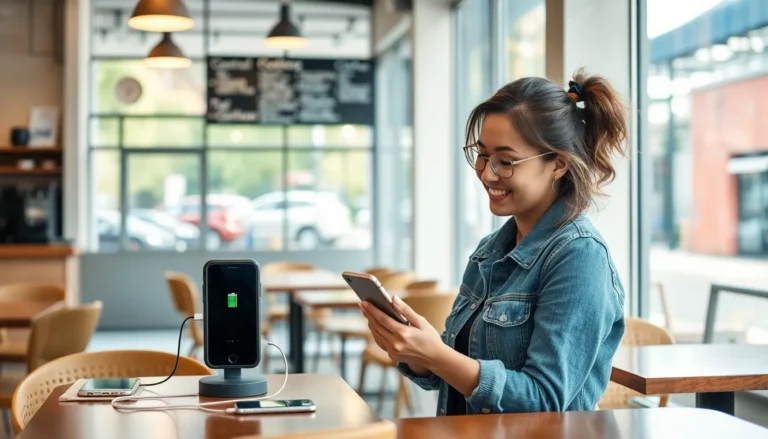Table of Contents
ToggleIn a world where smartphones are practically an extension of ourselves, transferring data between devices shouldn’t feel like rocket science. Yet, many find themselves tangled in a web of cables, apps, and confusion. Whether it’s moving photos of last weekend’s epic barbecue or that important work presentation, the process can be as tricky as trying to fold a fitted sheet.
Fear not! This guide demystifies smartphone data transfer, turning it from a daunting task into a walk in the park. With a sprinkle of humor and a dash of know-how, readers will discover simple methods to ensure their precious data makes the leap without a hitch. So grab your device and get ready to unleash the full potential of your digital life—because who doesn’t want to keep their memes and memories safe and sound?
Overview Of Smartphone Data Transfer
Smartphone data transfer involves moving information between devices. Various methods exist to facilitate this process, whether it’s sharing personal content or business files. Mobile users often seek efficient techniques to keep their data intact.
Using cloud services offers a convenient solution. Data can synchronize automatically across devices, minimizing the risk of loss. For instance, Google Drive and iCloud allow file access on multiple smartphones.
Cable transfers also stand out. USB cables provide a direct connection for fast data migration. Connecting devices to a computer allows users to manage files without complications.
Bluetooth technology presents another option. This wireless method enables the transfer of smaller files over short distances. While Bluetooth may be slower, its convenience makes it appealing for quick exchanges.
Third-party applications enhance the transfer experience. Apps like SHAREit or Xender streamline the process, making it user-friendly. These tools often allow for multiple file types, including images and documents.
Security remains a top priority during data transfer. Ensuring encryption helps protect sensitive information. Users should verify app permissions and avoid unknown networks to safeguard data.
Several methods exist for smartphone data transfer, ranging from cloud services to direct cable connections. Each method offers unique benefits, enabling users to select the best one for their needs. With the right approach, data transfer can become a seamless part of digital life.
Methods Of Data Transfer

Transferring data between smartphones involves various methods, each with unique advantages. Understanding these options simplifies the process.
Wireless Transfer Options
Wireless transfer options offer convenience and flexibility. Bluetooth enables users to send smaller files across devices without cables. Wi-Fi Direct provides faster transfer speeds when both smartphones connect to the same network, making it ideal for larger files. Cloud services like Google Drive and iCloud allow for easy synchronization of files across devices, granting access from anywhere. Third-party apps, such as SHAREit or Xender, enhance efficiency by bypassing traditional methods and providing a user-friendly interface. These wireless solutions decrease the clutter of cables and empower users to transfer data seamlessly.
Wired Transfer Options
Wired transfer options deliver speed and reliability. Using a USB cable remains one of the fastest ways to transfer data, allowing direct connections between devices. Many smartphones support USB-C or Lightning connections, streamlining the transfer of large files, such as videos and high-resolution photos. Additionally, some devices enable data transfer through a computer, offering full control and security over the process. Proprietary software from manufacturers, like Samsung Smart Switch or Apple Migration Assistant, simplifies the setup and ensures a smooth transfer experience. Wired connections provide a dependable alternative for those requiring swift data migration.
Popular Smartphone Data Transfer Tools
Various tools facilitate the smartphone data transfer process, ensuring smooth migration of important files and memories. Users can choose from built-in features and reliable third-party applications based on their preferences.
Built-In Features
Smartphones often come equipped with robust built-in features for data transfer. For instance, Android devices utilize the “Nearby Share” function, allowing users to send files effortlessly over Wi-Fi Direct. Apple users benefit from AirDrop, which enables seamless file sharing between iPhones and iPads. Additionally, many smartphones offer direct transfer options during setup, making it easy to switch from an old device to a new one without extra hassle. Users can access these features through their device settings, streamlining the transfer process while ensuring security.
Third-Party Applications
Various third-party applications enhance the data transfer experience. SHAREit and Xender offer fast file sharing capabilities, utilizing Wi-Fi networks for quick transfers without data loss. Other tools, such as Google Drive and Dropbox, enable users to back up and synchronize files across devices securely. Additionally, Samsung Smart Switch provides a dedicated solution for users switching between devices, simplifying the import process. Each application features user-friendly interfaces, making data transfer accessible to individuals regardless of technical expertise.
Common Challenges In Smartphone Data Transfer
Transferring data between smartphones can present several challenges. Certain issues may hinder the process and create frustration.
Compatibility Issues
Compatibility issues often arise during data transfers. Different operating systems, like Android and iOS, may limit seamless sharing between devices. Users might find that certain applications work on one platform but not on another. File formats can also create obstacles; some files might not transfer readily due to unsupported formats. Manufacturers might implement unique transfer protocols, resulting in incompatibility. Transferring data using cross-platform solutions usually presents a challenge when trying to maintain formatting or metadata.
Data Loss Risks
Data loss risks pose a significant concern during smartphone transfers. Corrupted files can result from unstable connections or interruptions during the transfer process. Users may accidentally delete files while attempting to migrate or transfer data without proper backup. Misconfigurations in settings can lead to partial transfers, causing some files to be lost. Relying on third-party apps also increases the risk; malicious or poorly designed applications may jeopardize data integrity. Regular backups are crucial to ensure that critical files remain intact throughout the transfer process.
Transferring data between smartphones doesn’t have to be a daunting task. With the right methods and tools at their disposal, users can easily move their cherished memories and essential files without hassle. Embracing both wireless and wired options allows for flexibility and efficiency, catering to different needs and preferences.
By prioritizing security and utilizing reliable applications, individuals can ensure a smooth transfer process while safeguarding their data. Whether opting for cloud services or third-party apps, the key is to find what works best for their unique situation. With these strategies in hand, anyone can enhance their digital experience and keep their important information secure.







